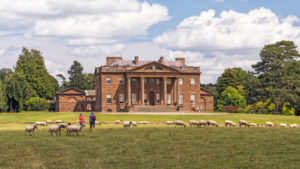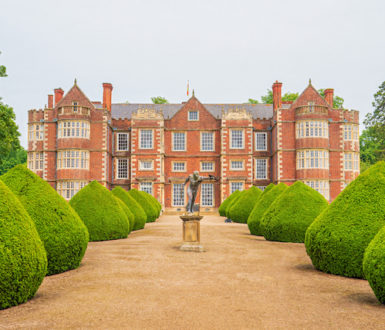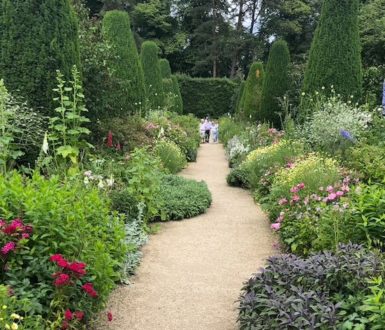Why Capability Brown is known for garden design

This picture of Berrington Hall in Herefordshire shows a classic example of an English country house. It is set within beautiful parkland with grazing sheep, almost right up to the front door.
What is surprising is that this landscape is actually man-made. The man who designed it was a ‘landscape architect’ known as Lancelot ‘Capability’ Brown (1716-1783).
Before Capability Brown, the gardens of stately homes were formal and symmetrical, often with trees and hedges clipped into shapes, or with separate themed areas. Many were based on the gardens of Versailles in France.
Brown developed a completely different idea – he designed huge gardens that made the house look like it had been dropped into a stunning natural landscape of woodland, water and grazing sheep (a ditch called a ha-ha stops the sheep from actually getting into the house).
As part of the process, he would move earth to create hills, plant trees, dam rivers, and make charming temples and bridges. However, he sometimes also demolished buildings – or whole villages – to get the right ‘look’. It was a very long and expensive process.
His gardens also featured big areas of lawn. This does not look very special today, but before lawnmowers were invented in 1830, lawns had to be cut by hand and were a real status symbol.
Despite the cost, Brown’s gardens became wildly popular among the wealthy and he designed hundreds across the country. However after his death, fashions changed and people wanted exotic plants instead. People also disagreed with the idea of knocking down people’s houses for the sake of garden design.
However, many of his gardens survive and they still offer an idealised version of the British landscape that is often breathtaking. Examples include Highclere Castle (used in Downton Abbey), Chatsworth House, Stowe and Blenheim Palace.
Image: Stuartan/Dreamstime



